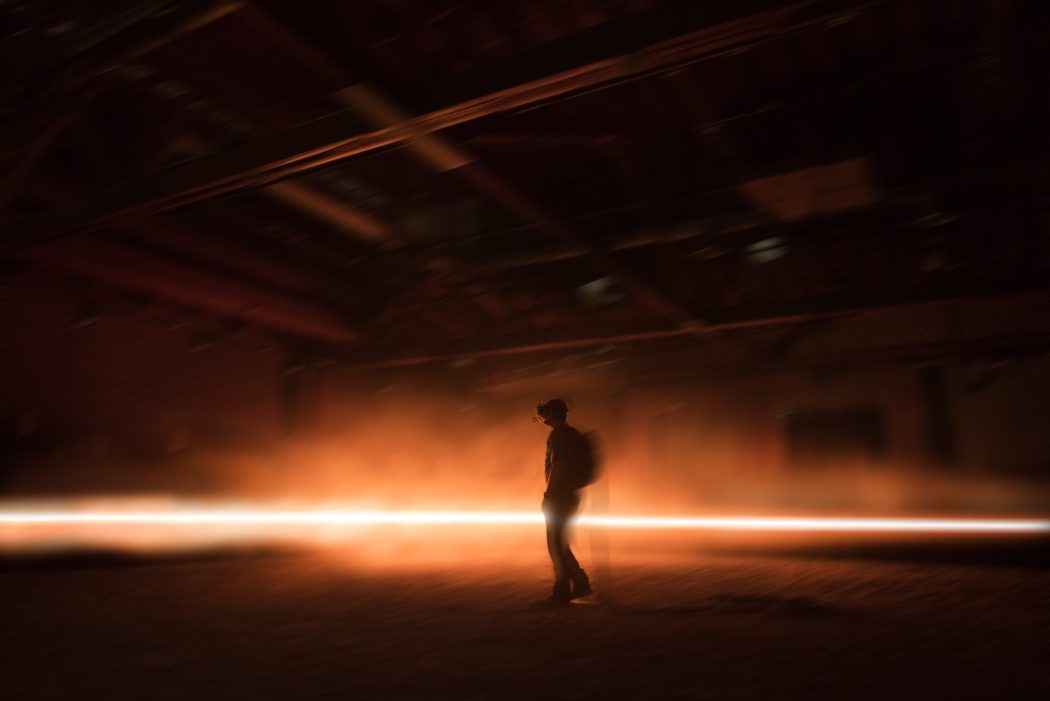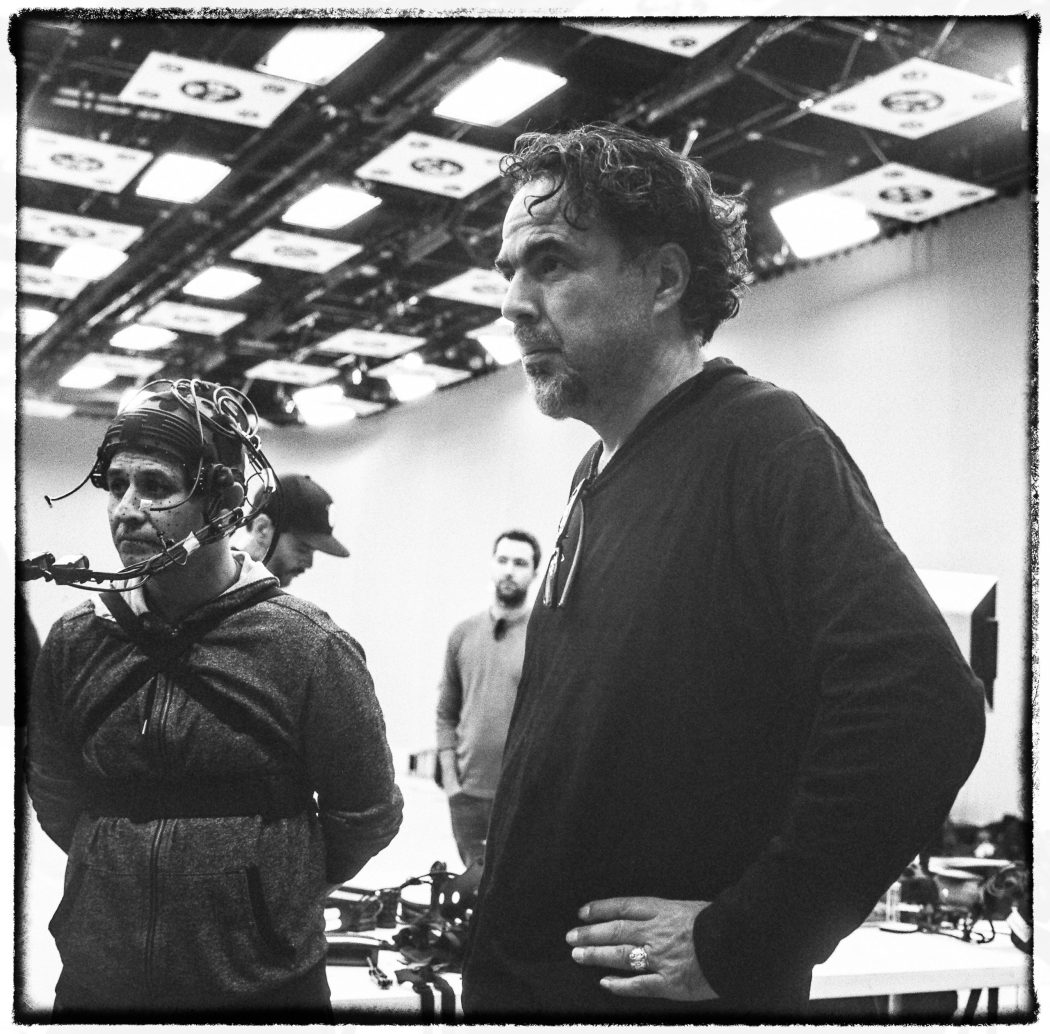
A user in the experience. Photo by Emmanuel Lubezki
I stood shoeless in a cool dark desert surrounded by a dozen or so refugees attempting to make their way across the border.
Led by a human smuggler, a coyote, who talked a steady staccato into his cell, the people groaned and murmured. A middle-aged woman wearing one shoe hobbled, one arm draped over her younger companion. A man carried a cooing infant in his jacket. A dazed boy trudged. The breeze became a strong wind that was a whir of helicopters and blinding light. I gasped, maybe cursed, when my sight returned. I was facing the wrong end of a rifle and a big man shouted in Spanish. Everyone, save the glassy-eyed 4-year-old, dropped to their knees. So did I.
Then I felt a little chagrined. After all, I was all-but alone in a sand-carpeted room at the Food and Fiber Pavilion at Fair Park experiencing Carne y Arena (Virtually Present, Physically Invisible), a VR exhibition directed by Alejandro G. Iñárritu, one of Hollywood’s best directors (most recently Birdman, The Revenant, for which the Academy awarded him Best Director consecutive years).
I brushed away a tear a few minutes later as I handed my headset and other gear to the staffer whose job seemingly is to ensure visitors don’t run into walls or freak out or injure themselves.
The immersive experience simulates a snippet of the harrowing plight of real Central American and Mexican refugees journeying to the United States.
“There are no actors here. These are true stories re-enacted by the people who experienced them. Even some of the clothes they wear are pieces they wore while crossing the border” Iñárritu says in his artist statement.
Every person depicted is a real immigrant. After exiting the virtual reality portion of the experience, which lasts about 20 minutes, visitors learn about people featured, why they fled their countries.

Alejandro González Iñárritu and a baker from El Salvador at a motion capture shoot for Carne y Arena. Photo by Chachi Ramirez, courtesy of Legendary
The director says the project has been growing in his mind for several years, during which time he met and interviewed many Mexican and Central American refugees.
“Their life stories haunted me, so I invited some of them to collaborate with me in the project,” Iñárritu says in a press release from Nasher Sculpture Center, which helped bring the exhibit to Dallas. “My intention was to experiment with VR technology to explore the human condition in an attempt to break the dictatorship of the frame—within which things are just observed—and claim the space to allow the visitor to go through a direct experience walking in the immigrants’ feet, under their skin, and into their hearts.”
Observation: In Iñárritu’s 2007 film Babel, one of many intersecting stories depicts a Mexican nanny stuck in the desert expanse between Mexico and San Diego. It is one of the first times I ever thought so deeply about or realized the unforgiving nature of such a trek. And here we are again.
Carne y Arena is showing in Dallas through April 18 thanks to The Nasher Sculpture Center and the George W. Bush Presidential Center in association with PHI Studio, Emerson Collective, Legendary Entertainment and Fondazione Prada.
Bush Center president Kenneth Hersh says he hopes the experience will elevate the immigration discussion.
“We believe the future prosperity, vitality, and security of our nation is intertwined with our immigration system,” he says. “We are dedicated to changing the terms of the immigration debate and offering solutions that are bold and politically viable.”
Nasher Sculpture Center director Jeremy Strick also expresses high expectations of the project.
“Bearing sympathetic witness to the plight of the migrant and refugee, we trust this immersive, physical experience will bring compassionate discourse to the immigration debate, not only in this country, but around the world, and we are delighted to be part of that progress.”
Ages 13 and older. Tickets are available here. Please visit the Know Before You Go page for the most up-to-date COVID-prevention measures.





